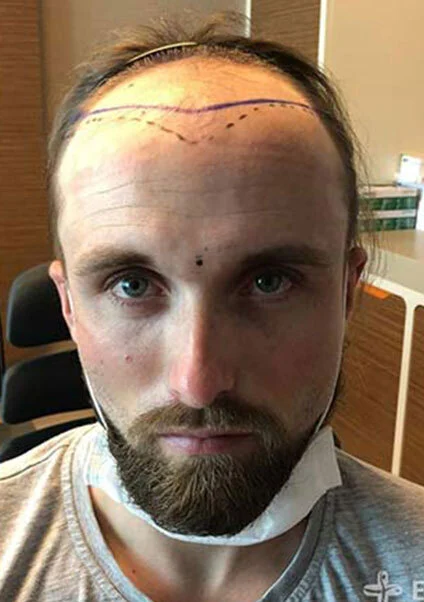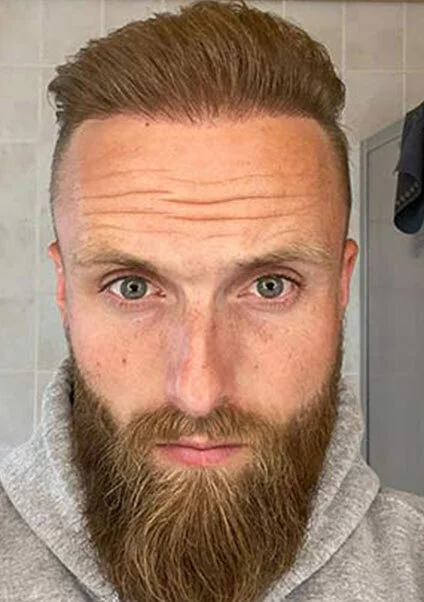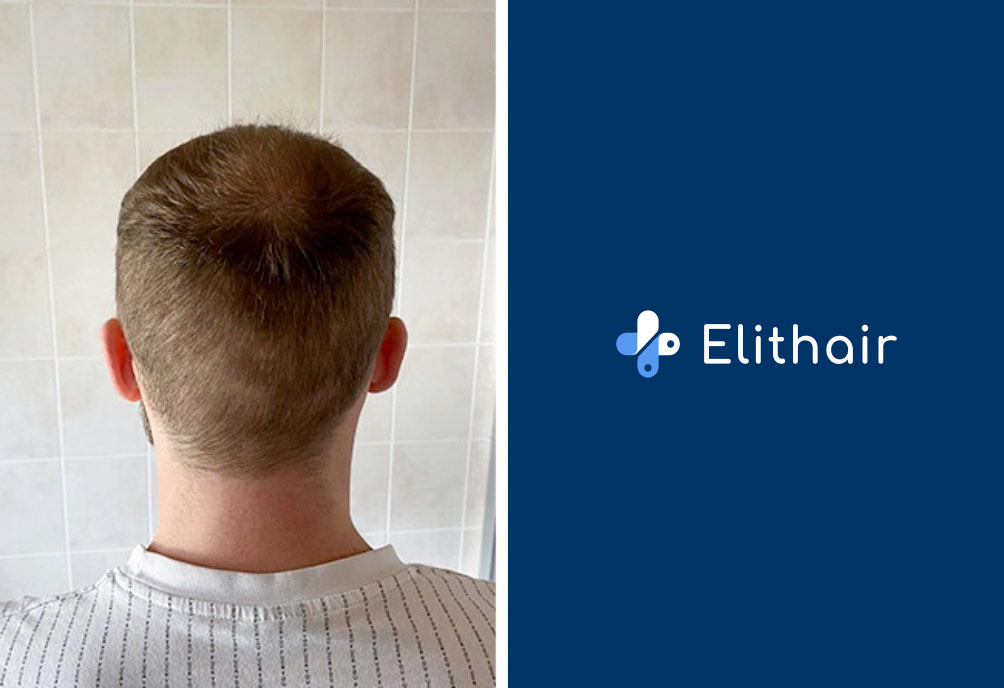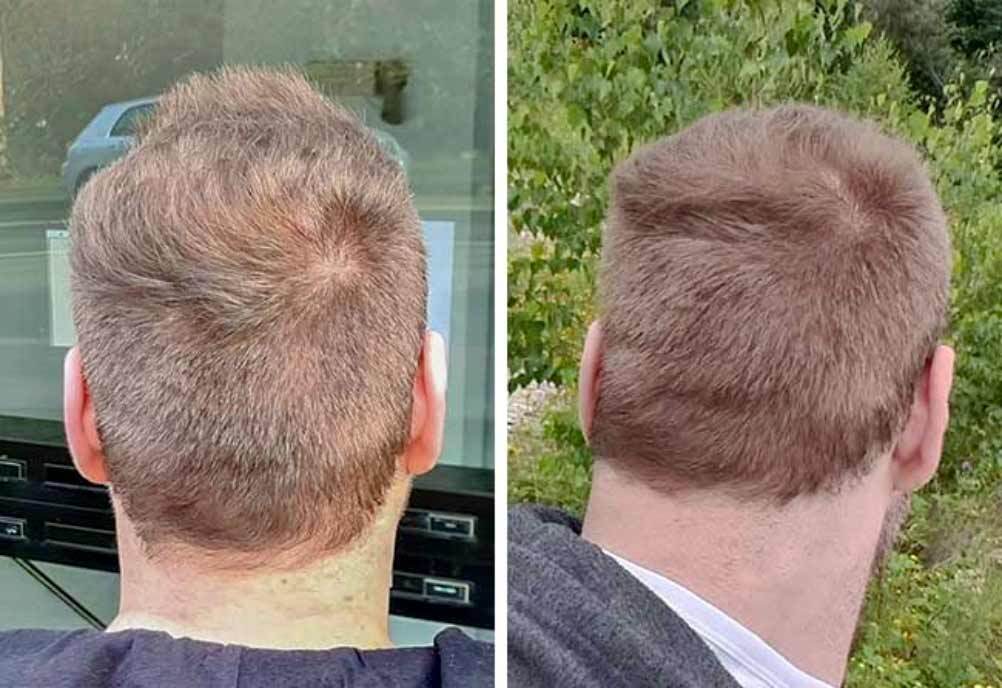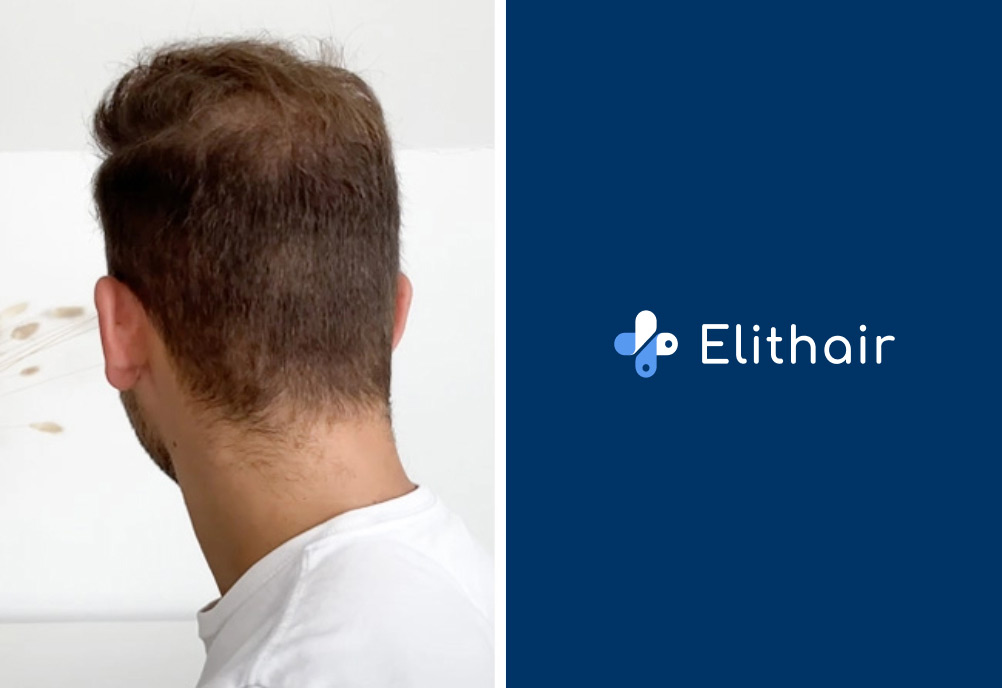How Does a Hair Transplant Work?
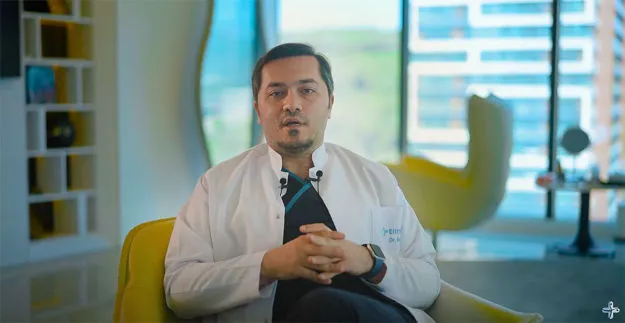

Your hair restoration journey with Elithair begins even before you step into the clinic, thanks to our exclusive NEO FUE Set, delivered straight to your door.
Developed by Dr. Balwi, this innovative preparation kit includes two powerful serums and a derma roller, designed to strengthen your hair grafts and optimise your scalp for treatment.
The result? A dramatically improved hair growth rate of up to 98%, ensuring stronger, healthier, and longer-lasting results. Start your transformation the right way with Elithair’s pioneering techniques.
Harvesting the Grafts: Why FUE is the Superior Choice
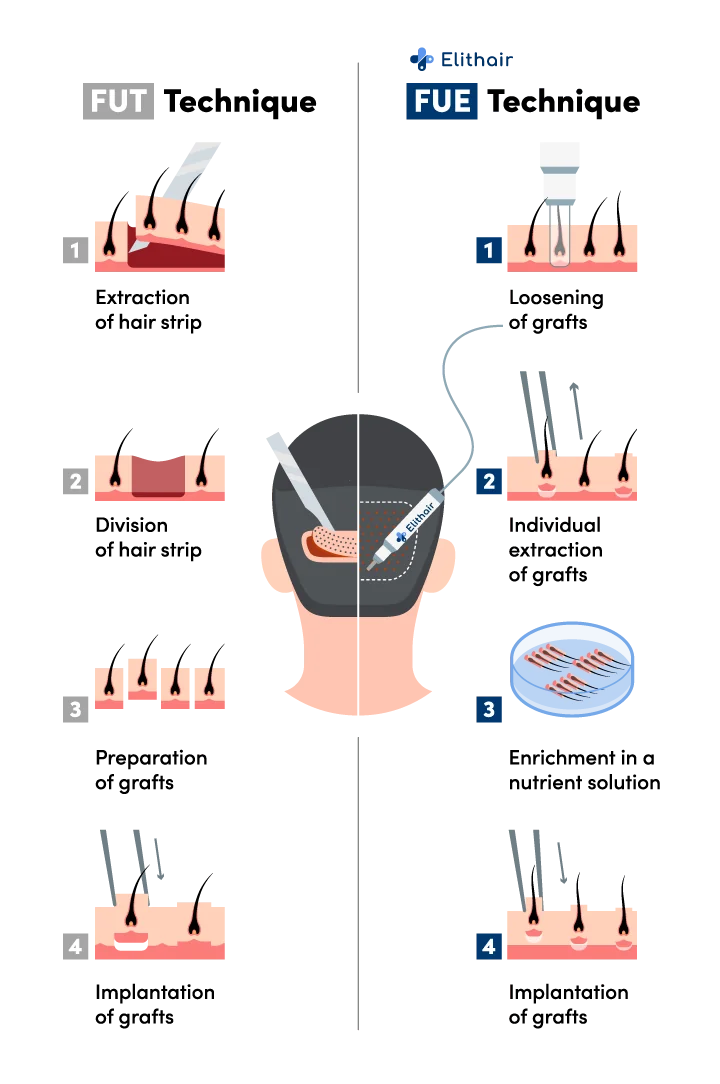
When it comes to hair transplantation, two primary techniques are used to harvest grafts: Follicular Unit Extraction (FUE) and Follicular Unit Transplantation (FUT). At Elithair, we exclusively use the modern FUE method to ensure the best possible results for our patients.
FUE involves carefully extracting individual hair follicles from the donor area using a precise hollow needle, measuring just 0.8-0.9mm in diameter. This advanced technique leaves behind tiny, barely noticeable circular marks, requires no stitches, and allows for faster healing. It also enables follicles to be taken from various parts of the body, offering greater flexibility for patients with limited donor areas.
In contrast, FUT involves removing a strip of scalp from the donor area, which is then divided into individual follicular units. While effective, this method leaves a visible linear scar, has a longer recovery time, and carries a higher risk of nerve damage.
By exclusively offering FUE, Elithair ensures minimal scarring, shorter downtime, and a smoother journey to restored confidence. Modern, precise, and minimally invasive, FUE is the clear choice for a natural-looking transformation.
Hair Follicle Implantation: Finding the Right Solution for You
Selecting the ideal method for graft implantation is a vital step in your hair restoration journey, as it depends on your unique hair loss type and personal goals. That’s why expert guidance is essential.
At Elithair, our specialists take the time to understand your specific needs, offering personalised recommendations and explaining why each treatment is the perfect fit for you. With our tailored approach, you’re one step closer to natural, lasting results and renewed confidence.
Who Is a Good Candidate for a Hair Transplant?
Hair transplants are a transformative solution for both men and women experiencing hair loss. For men, the leading cause is often androgenetic alopecia, a condition linked to genetics and hormones. Women can also face similar challenges, though their hair loss typically follows distinct patterns.
To be a suitable candidate, a healthy scalp and a sufficient supply of strong, healthy hair in the donor area are essential. Additionally, the recipient area should be free from scars or conditions that could hinder hair growth. While most individuals qualify for this minimally invasive procedure, a thorough evaluation is necessary to account for unique circumstances.
At Elithair, we ensure a comprehensive assessment with our exclusive Pre-Test System. This process includes 6 detailed analyses to determine your suitability and optimise your hair restoration journey. With expert guidance, you can confidently take the first step towards regaining your hair and self-assurance.
Free AnalysisRisks and Side Effects of a Hair Surgery
Hair transplantation is generally a safe and minimally invasive procedure that carries rare risks and side effects that patients should be aware of. One significant concern is scarring, which patients often worry about. However, with the modern FUE method (Follicular Unit Extraction), wounds heal quickly and leave virtually no scars.
Another potential side effect is bleeding. A slight reddish fluid flowing into the donor area on the first day after the procedure on day one post-procedure is expected. This fluid consists of only 2% blood, while the rest is the saline solution from transplantation.
During the hair transplantation process, small red dots may appear on the scalp, caused by the grafts being inserted into the open channels in the recipient area. These dots usually disappear within a few weeks after the transplantation. It’s important to note that these small dots should never hurt more than a scratch. However, if signs of infection occur, such as increased pain, redness, or discharge, it’s important to seek medical attention immediately.
Post-transplant, there might be a mild tightness in the scalp – nothing overwhelming. Most patients report very little pain that can be effectively treated with pain relievers. Discomfort diminishes within a few days, allowing you to resume your regular activities faster than you would expect.
Is the Procedure Painful?
It’s natural to feel a little anxious about potential discomfort during a hair transplant. That’s why at Elithair, we’ve developed the exclusive Sleep-Deep Method, designed to make your experience completely pain-free.
This innovative approach begins with a dose of the anesthetic Propofol, gently putting you into a 15-minute deep sleep. While you’re relaxed, a local anesthetic is administered, so you won’t feel a thing. By the time you wake up, you’ll be ready for the hair transplant to proceed—completely pain-free.
Our patients love the comfort and ease this technique provides, and now you can experience it too, only at Elithair. Say goodbye to fear and hello to a seamless transformation.
How Long Is the Recovery Time?
Your hair transplant recovery is quicker than you might think, with results that leave you feeling confident and refreshed. Just days after the procedure, the small incisions begin to heal, forming protective crusts that naturally fall away. Any temporary redness fades swiftly, blending seamlessly with your existing hair.
By day 12, with proper aftercare, healing is typically complete, leaving the transplanted area looking natural and integrated. Throughout your journey, Elithair provides expert guidance and support via our dedicated app, ensuring a smooth and stress-free recovery process as you take the next step toward revitalised, full hair.
Post-Hair Surgery Care: Elithair’s Essential Tips
What should you avoid during the first days?
Direct exposure to the sun
Sauna & Solarium
Physical activity
Swimming
Alcohol
Styling products
Smoking
Looking after yourself in the first few days after a hair transplant is key to achieving the best possible results. Here’s what to keep in mind:
- Take it easy: Avoid strenuous activities that cause sweating or raise blood pressure, as these can affect the healing process and your grafts. This is the perfect time to rest and relax.
- Stay out of the sun: Protect your scalp from direct sunlight, as the treated areas are particularly sensitive and prone to irritation during recovery.
To support you every step of the way, Elithair provides personalised aftercare guidance from our experts and through the Elithair app. The app delivers helpful tips, reminders, and progress-tracking tools, including the ability to upload photos for our specialists to evaluate.
With Elithair, your well-being is always our priority, ensuring a smooth recovery and outstanding results.
What Are the Costs of a Hair Transplant?
The cost of a hair transplant can vary depending on several factors unique to each individual. Turkey has become a popular and affordable destination for hair restoration, offering world-class treatments at a fraction of the cost compared to other countries.
At Elithair, we provide a personalised, detailed cost breakdown during your free, no-obligation consultation. Our experts will walk you through your tailored treatment plan, ensuring complete transparency and no hidden surprises.
Ready to take the first step? Contact us today to schedule your consultation and learn more about how we can help you achieve your hair restoration goals.
Calculate My OfferAchieve a Full Head of Hair with a Trusted Hair Loss Clinic
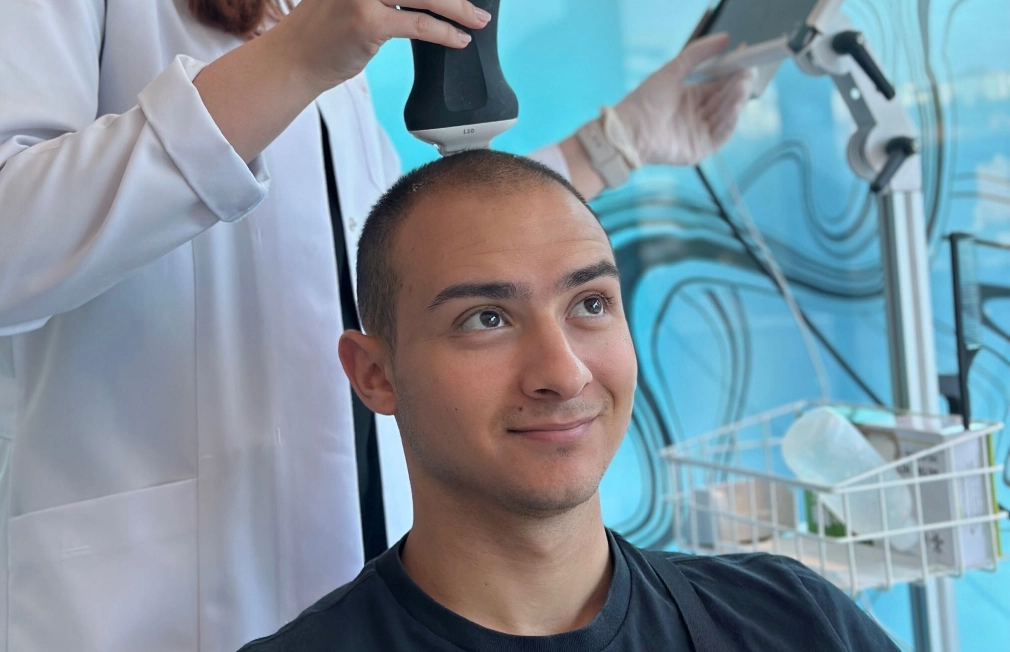
Hair transplantation is a safe, minimally invasive, and highly effective solution to hair loss. With advanced modern techniques, the procedure is painless, leaves virtually no visible scars, and delivers natural-looking results with impressive hair density.
The first step towards achieving your goals is choosing a skilled specialist and a reputable clinic—this decision sets the foundation for your transformation. At Elithair, we combine expertise with personalised care to ensure your journey is smooth and successful.
Have questions? Our industry-leading experts are here to help. Book a free, no-obligation consultation today and let us guide you towards fuller, more confident hair.
Contact Us
FAQ
Is a Head Covering Necessary Post-Hair Transplantation?
In most cases, doctors recommend wearing a head covering for a certain period after the hair transplantation. This cover acts as a safeguard, shielding treated areas from elements like sunlight, dust, and dirt. Moreover, it minimizes friction, aiding the healing of transplanted hair further.
Following your doctor’s guidance and adhering to the advised period for the head covering is vital. This step ensures successful recovery and supports the finest results of your hair transplantation.
What is the History of Hair Transplantation?
- 1500 BC: First mention of hair restoration in the Ebers Papyrus of ancient Egypt.
- 1897: Dr. Menahem Hodara conducts the first hair transplantation attempt in Turkey.
- 1923-1943: Okuda, Sasagawa, and other Japanese dermatologists experiment with hair transplantation.
- 1959: In the USA, Dr. Orentreich performs the first hair transplantation using the punch technique.
- 1975: Dermatologist and hair transplant surgeon Dr. O’Tar T. Norwood updates the Hamilton Scale to classify stages of male pattern baldness.
- 1977: Dr. E. Ludwig introduces the Ludwig Scale, a method to classify female hair loss.
- 1988: Dr. Bobby Limmer invents the FUT technique (Follicular Unit Transplantation), a hair transplantation using the strip harvesting method.
- 1995-2002: Development of the FUE technique by Dr. Ray Woods, Dr. Bernstein, Dr. Rassman, and Dr. Masumi Inaba.
- 1999: Introduction of the Choi Implanter Pen and the DHI technique.
- 2007: Dr. Bernstein and Dr. Rassman present robotic hair transplantation at the ISHRS conference.
What Are the Latest Developments in Hair Transplantation-Tech?
Hair transplantation has made remarkable progress in recent years, especially through the introduction of robot-assisted procedures and the use of stem cells. Robot-assisted procedures involve precise extraction and transplantation of individual hair follicles, yielding results that look entirely natural. However, robot procedures lack the human touch required to ensure optimal hair growth direction and aesthetic harmony, making manual hair transplantations performed by experienced surgeons potentially way more advantageous.
Another exciting avenue is hair transplantation with stem cells. This involves collecting adult stem cells from the patient’s body and transplanting them into the areas with hair loss. These stem cells stimulate the regeneration and fortification of hair follicles, resulting in denser and stronger hair growth. They also accelerate healing and lower infection risks. Although stem cell-based transplantation is relatively new, more research is needed to ensure its long-term effectiveness and safety.
While robot-assisted and stem cell-based methods show great potential, manual hair transplantation still holds sway. Seasoned surgeons can personalize the procedure to match specific needs and aesthetic preferences. They factor in aspects like hair growth direction, a natural hairline, and overall aesthetic harmony for optimal results. Manual transplantation ensures a hands-on approach, guaranteeing the procedure’s quality.
What Are the Success Rates of Hair Transplantations?
Hair transplantations are the only permanent solution for hereditary baldness. Success rates are crucial to evaluate when deciding about this surgical procedure for hair restoration. With the advancement of technology and techniques, the success rates of hair transplantations have significantly improved over the years.
On average, the success rate of hair transplantation ranges between 80 and 90%. It’s important to note that these rates hinge on multiple factors, including the patient’s unique circumstances and the surgeon’s expertise.
With modern methods like the exclusive NEO FUE increased hair growth of up to 98% can be achieved. Benefit from this innovation from the market leader by undergoing a complimentary hair analysis and counsel from our adept professionals.
By choosing a reputable clinic and an experienced surgeon, you can enhance your chances of successful hair transplantation. This promises enduring, natural-looking hair, nurturing amplified self-confidence.
What Are the Emotional and Psychological Benefits of Hair Transplantation?
Hair transplantation transcends physical restoration; it gives remarkable emotional and psychological benefits to individuals. Hair loss can deeply impact self-esteem, confidence, and overall mental well-being.
According to a study conducted at Indiana University School of Medicine in Indianapolis, androgenetic alopecia represents a significant psychosocial stress factor in the lives of those affected, denting their quality of life in multiple ways.
Therefore, hair transplantations offer the opportunity to not only restore the appearance of full hair but also reimagine confidence and self-image.
By restoring a natural hairline and fuller hair, individuals often experience a boost in self-confidence, leading to improved social interactions, heightened self-worth, and a greater sense of attractiveness. This ripple of positive change can have far-reaching effects on various aspects of life, including personal relationships, career opportunities, and overall quality of life.
With the ability to permanently address hair loss, hair transplantation provides individuals with a renewed sense of identity, enabling them to approach life with renewed enthusiasm and confidence.
